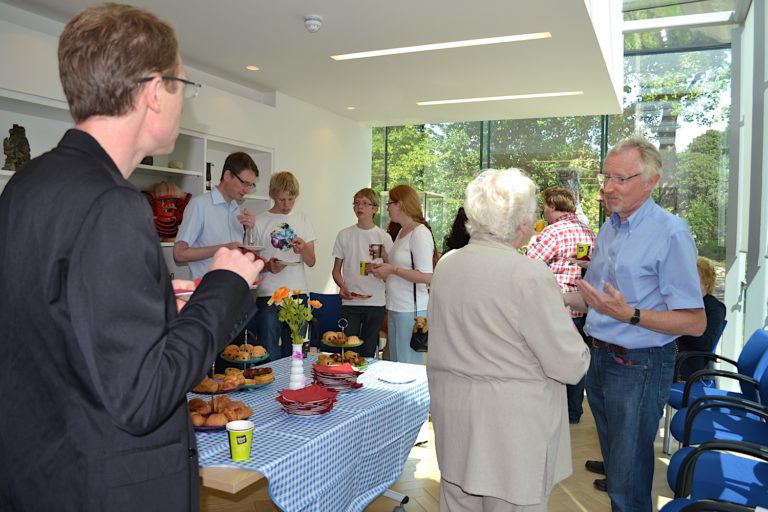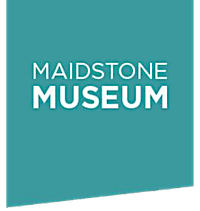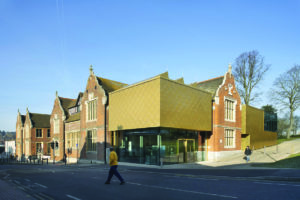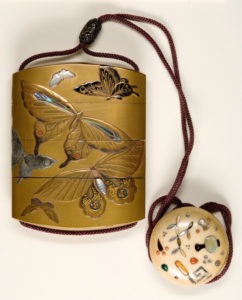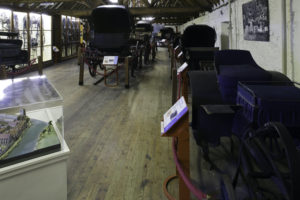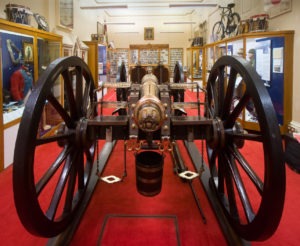Maidstone Museums’ Friends are part of a charitable, independent organisation set up to lead our appreciation of and support for the local Museums – their buildings, collections, displays and interpretation, educational activity, research and much more. This is achieved through co-ordinated voluntary effort. The charity:-
- promotes the three Museums to the residents of Maidstone and beyond, helping to preserve our local culture and heritage;
- secures finance to help with the running of the Museums, purchase of artefacts, restoration of works, research, improved display & interpretation, improvement/adaption of the buildings. We do this through grant-giving trusts, local fund-raising activities, donations, and the Friends’ scheme;
- provides volunteer effort to support the operation and development of the Museums; and
- co-ordinates and operates the Friends’ scheme.
The governing organisation – Maidstone Museums’ Foundation (MMF) – was established in September 1988 when it drew up its constitution. MMF was registered as an independent charity with the Charity Commission in December 1989.
The charity is operated under the leadership of a Board of Trustees. All these individuals are volunteers; indeed, the charity has no paid staff. See the ‘Trustees’ page for detailed information about the individuals involved, our constitution, policies, annual general meetings, accounts, and annual reports.
Maidstone's Museums
Maidstone is home to some of the finest museums in the South East, containing the largest collection of artefacts in the County of Kent – some 600,000 individual items. These are regarded as comprising one of the South East’s most important mixed collections. The Museums are owned, funded, managed and operated by Maidstone Borough Council.
The Council does meet regularly with MMF, and the Museums’ Director is an ex-officio member of the Friends’ Board.
Technically, there are three separate Museums, each located in the centre of Maidstone:
- Maidstone Museum tells the story of the area from its earliest times, through the eyes of those who lived there;
- the Queen’s Own Royal West Kent Regiment Museum tells the story of this famous local Regiment; and
- the Carriage Museum is home to one of Europe’s best collections of horse-drawn carriages and vehicles
In addition to the objects in the Carriage Museum, there are two collections of exceptional National importance:
- The Japanese collection of Fine and Applied Art from the Edo period (1603 – 1868) is acknowledged as the best, most comprehensive collection in public ownership outside a National museum; and
- Lucius Julius Brenchley was born into a wealthy Maidstone family. Between 1845 and 1867 he travelled around the world collecting thousands of objects while living with indigenous people in North America and with the Royal Navy in the Pacific. Many of the items in the collection come from New Zealand and the Solomon Islands
Beyond these three National collections, there are extensive holdings of British and foreign archaeology (including two Egyptian human mummies and many animal ones), county-wide social history material, worldwide ethnography, over 20,000 coins and medals, the finest ceramic collection in the region, and over 9,000 items of costumes and textiles.
The Museum also holds 600 oil paintings (including works by Continental Old Masters), 2,500 watercolours and drawings, and over 3,500 prints. The National History collection includes zoological holdings forming a comprehensive collection of British birds, mammals and insects. Geology includes important collections of minerals and palaeontology. Botanical collections include 30,000 specimens representative of British flora and include type specimens.
The first two museums are in the same building (near Fremlins Walk shopping centre), parts of which date back to Tudor times, and the overall building has seen many additions from Victorian times right up to the 21st Century. The Carriage Museum is housed in a former medieval tithe barn (14th Century), which forms one of a number of buildings in Maidstone’s historic quarter, by the River Medway – other buildings include All Saints Church, the Archbishop’s Palace and the former College building.
